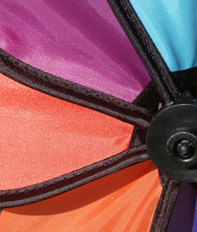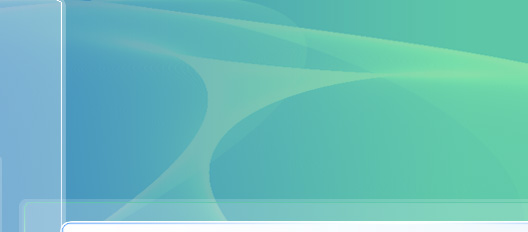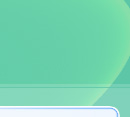








 |
 |
 |
 |
 |
 |

Q: What kind of art file do we need? A: Depends on type of printing but, universally, the answer is: art files created in Adobe Illustrator version CS 3 (AI CS 3) or lower or CorelDraw version 12 (CD 12) or lower ("Vector Art"), because: 1.) Most screen printing is produced using spot color separations. The graphic software programs Adobe Illustrator and CorelDraw add-ons perform these spot color separation tasks. These are the software programs we most commonly use in day-to-day color separations. 2.) Art generated in these programs are true "Vector" art files. They will not pixelate should the file size need to be increased for printing on a shirt. Vector art files will have clean and clear detail, gradients (half tones), lines, curves, etc, when viewed in these programs. And, they will register and print clean and clear. NOTE: GOOD ART + GOOD COLORS + GOOD APPAREL(substrate) + GOOD PRINT TECHNIQUES (i.e.; equipment/supplies/experience) = GOOD PRINTED PRODUCTS For SPOT COLOR printing: AI CS 3 or lower or CD 12 or lower. Art files created in these formats will normally have an .eps, .ai, or .cdr extension. The fonts/text should be converted to outlines (.ai) or curves (.cdr), or the font file(s) sent. A hard copy (.jpeg, .gif, .tiff, etc.), should also be sent with the vector art file. NOTE: Bitmap files (.jpeg, gif, tiff, etc.) embedded in an .ai or .cdr file and then saved do not convert to vector and are not True Vector art. For SIMULATED PROCESS printing: AI CS 3 or lower, CD 12 or lower, OR a High Resolution bitmap file (300 dpi (dots per inch) at print size). Preferrably .tif or .jpg files saved in RGB (red, green, blue) colors. For 4-Color (CMYK) Process/Full Color printing: AI CS 3 or lower, CD 12 or lower, OR a High Resolution bitmap file (300 dpi) at print size. Preferrably .tif or .jpg files saved in CMYK (cyan, magenta, yellow, & black) colors. Q: How many colors can you print? Depends on type of printing and the art to print but, we have up to six print stations to use. SPOT COLOR printing: WHITE tees: up to 6 colors; COLORED tees: up to 6 colors w/1 color being white. SIMULATED PROCESS printing: up to 6 colors and using the 6 colors to "simulate" other colors in the art to achieve photorealistic prints with a finite set of colors. Recommended for printing on colored tees including white tees. 4-COLOR PROCESS printing: using 4 process inks (cyan (C), magenta (M), yellow (Y) and black (K)) and up to 2 spot color inks in some cases to achieve photorealistic prints with infinite colors and shades (e.g.; flower gardens, landscapes, etc.). Recommended for printing on white, 100% cotton, 6.1 oz type apparel. Q: WHAT IS THE DIFFERENCE BETWEEN RASTER IMAGE ART (e.g.; .jpeg, .psd, .tiff) AND VECTOR IMAGE ART (e.g.; .ai, .cdr)? All electronic art images are divided into one of two core types: RASTER images (also known as 'bitmaps') and VECTOR images. In a nutshell, raster images are composed of connected dots and vectors are images composed of connected lines. Raster images are pixel oriented while vector images are object-oriented. These two formats are quite different from one another, yet they contrast and complement one another when used appropriately for the desired final output method. A RASTER image is a collection of dots called pixels. Each pixel is a tiny colored square. When an image is scanned, the image is converted to a collection of pixels called a raster image. Scanned graphics and web graphics (.jpeg and .gif) are the most common forms of raster images. Web graphics, including .jpeg .gif files, are always low-resolution raster images. For this reason, web graphics are always a poor choice for imprinting and editing. Production-ready clip art is an essential tool for creating high quality imprints. Common raster image formats include: BMP (Windows Bitmap), PCX (Paintbrush), TIFF (Tag Interleave Format), JPEG (Joint Photographics Expert Group), GIF (Graphics Interchange Format) , PNG (Portable Network Graphic), PSD (Adobe PhotoShop) and CPT (Corel PhotoPAINT). The resolution of a raster image or scanned image is expressed in terms of the dots per inch or dpi. The output quality of a printing device is dependent upon the resolution (dpi) of a bitmap or scan. Take a 300 dpi bitmap and increase the size in a graphics program, and presto - you have created a bad case of pixelation or jaggered edges. The only thing that happened is that the tiny pixel squares got bigger and created jaggered edges on the image. Decrease the size of the image and the these squares get smaller. The image retains its original edge definition without producing these jaggered edges. In other words, raster images do not scale up very well. The quality of an imprint produced from a raster image is dependant upon the resolution dpi of the raster image, the capabilities of the printing technology and whether or not the image has been scaled up. A VECTOR image is a collection of connected lines and curves that produce objects. When creating a vector image in a vector illustration program, node or drawing points are inserted and lines and curves connect notes together. This is the same principle as "connect the dots". Each node, line and curve is defined in the drawing by the graphics software by a mathematical description. Every aspect of a vector object is defined by math included node position, node location, line length and on down the line. Text objects are created by connecting nodes, lines and curves. Every letter in a font starts out as a vector object. Vector images are object-oriented, so a vector object will have a "wireframe" underneath the color(s) in the object. In a vector object, colors are like clothes over the top of a skeleton. CorelDRAW and Illustrator create text and objects using vectors that can be easily manipulated. Common vector formats include: EPS (Encapsulated PostScript), WMF (Windows Metafile), AI (Adobe Illustrator), CDR (CorelDraw), DXF (AutoCAD), SVG (Scalable Vector Graphics) and PLT (Hewlett Packard Graphics Language Plot File). One must know each of the above software to work/revise the art. We use Adobe Illustrator version CS 3 for AI, EPS, and WMF files, and CorelDraw version 12 for CDR, EPS, and WMF files. Vector images are defined by math, not pixels. They can be scaled up or down without any loss of quality. When an illustration (drawing) program sizes a vector image up or down, it simply multiplies the mathematical description of the object by a scaling factor. For example a 1" square object would need to be multiplied by a factor of 2 in order to double in size. The math is simply recalculated to produce an object twice the size of the original. Because vector images scale up or down without the loss of image quality, they can be output at any resolution that a printer is capable of producing. Unlike raster images, quality is not limited by dots per inch or scanning resolution. This is a big reason that vector graphics are so popular for clip art. For More Information on Raster and Vector images, we suggest GOOGLE. Formula for Great Looking Printed Apparel (in order of importance): True VECTOR art + Correct Art Separation of Colors + Correct Printing Method/Techniques + Good Quality Inks + Good Ink Color/Tonal Choices + Correct Type of Apparel = GREAT LOOKING PRINTED APPAREL. All of these have an effect on outcome. |

















